Bird Applies E-Scooter Sharing Lessons to Sales of E-Bikes


The craze over e-bikes has taken off like a rocket, and it shows no signs of stopping. That’s a good development in terms of cutting carbon emissions related to car travel. The problem for an e-bike maker is how to set itself apart from the competition, which is growing hotter practically by the day. The micro-mobility company Bird is betting that its experience in the e-scooter sharing area could make a key difference.
It started with an e-scooter sharing service…
The area of electric scooter and bike sharing is fraught with challenges. Nevertheless, California-based Bird and several other companies have persisted. Now Bird is determined to show that lessons learned in the e-scooter sharing sphere can translate into the sales of e-bikes.
Bird has more than 300 cities worldwide on its e-scooter sharing list, and it has already itself apart by focusing on safety, civic service and equity as well as cutting carbon emissions.
Earlier this month, for example, Bird joined with the micro-mobility firms Lime and Vero to launch the first e-scooter sharing service in New York City as a pilot project in the borough of the Bronx.
Bird prepared for the launch as early as three years ago, working with local alternative transportation groups in the Bronx and elsewhere to identify needs and service gaps. As a result, Bird is focusing on affordable access for local residents. A partnership with the company Scootaround will also enable Bird to improve access for riders with disabilities.
Bird also anticipates that a partnership with The Fortune Society will help achieve local hiring goals, including programs aimed at job seekers impacted by the criminal justice system.
As for safety, Bird has developed a suite of app-based programs aimed at reducing accidental and substance-related mishaps, as well as deterring misuse of the scooters. The company also sent outreach teams into the Bronx in the months running up to the launch to conduct demonstrations and safety clinics.
… and turned into e-bikes
Bird launched in 2017 and it has spent years building up its knowledge base and reputation for first class engineering on the e-scooter sharing model. It was little surprising when Bird decided to capitalize on its reputation by offering its “Bird Air” e-scooter for sale last year. Now the company is turning its attention to e-bikes, and it is moving more quickly. Earlier this summer Bird launched its first electric bike sharing program, and it is already moving into e-bike sales.
“Shared scooters helped lay a critical foundation for a transportation future that’s both electric and multimodal,” explained Bird CEO and founder Travis VanderZanden, while also indicating that scooters are not necessarily practical for longer distances. That is especially true for riders who are not in the kind of physical shape needed to balance on a small motorized platform in traffic for long periods of time.
For the e-bikes sharing service, Bird has focused on a somewhat modest three- to five-mile commute. That may not seem like a particularly long distance, but the idea is not to compete against buses, trains, or other mobility services in a particular city. Instead, Bird plans to focus on collaborating with other mobility services to help its e-bike riders plan their routes.
Selling e-bikes for longer commutes
The three- to five- mile target for the Bird e-bike sharing service also brings up the opportunity to expand ridesharing into suburban communities and smaller cities.
However, in these areas, longer distances and lower population densities can work against the sharing model. Retrieval costs, for example, can escalate. That’s where the bike selling model comes in.
Last week, Bird introduced the new Bird Bike as the first e-bike for purchase that is offered by a sharing service.
The company is not shy about leveraging the popularity of its e-scooter to make the sales pitch.
“Bird's consumer e-bike is custom designed by Bird's in-house team of award-winning engineers and industrial designers who brought to market the Bird Three, the industry's most eco-conscious shared e-scooter,” Bird explains.
"With our new e-bike, we are creating increased opportunities for people to embrace micro electric vehicles beyond the 300 cities we partner with to provide our shared services today. Our e-bike is safe, durable and provides a stylish aesthetic and advanced technology that delivers a fun alternative to congestion inducing, gas-powered cars. The Bird Bike lets you enjoy the ride like never before,” added VanderZanden.
Creating a new generation of e-bike advocates
Left unmentioned in Bird’s pitch are obstacles that e-bike riders and other cyclists can encounter in many areas, including the absence of bike lanes, and the presence of highway overpasses, bridges, tunnels and other infrastructure where bike travel is limited if not outright prohibited.
In addition, commutes from the suburbs and exurbs are obviously longer, and opportunities to connect with other travel modes tend to be scarcer.
Nevertheless, Bird is onto something. Despite the obstacles, a vast, untapped reservoir of potential e-bike commuters does exist outside of major cities.
Any number of those car commuters may have considered riding a bicycle to work, only to be discouraged by hills, distance, or both. With the assist of electric power, those sorts of obstacles melt into the background.
As for all the other obstacles, urban riders in hundreds of cities have already demonstrated that commuting on two wheels is fun, affordable and popular. That’s something suburban cycling advocates can take to the next meeting of their local planning board.
Image credit: Bird
How Virtual Volunteering Keeps Businesses Engaged with Nonprofits During the Pandemic

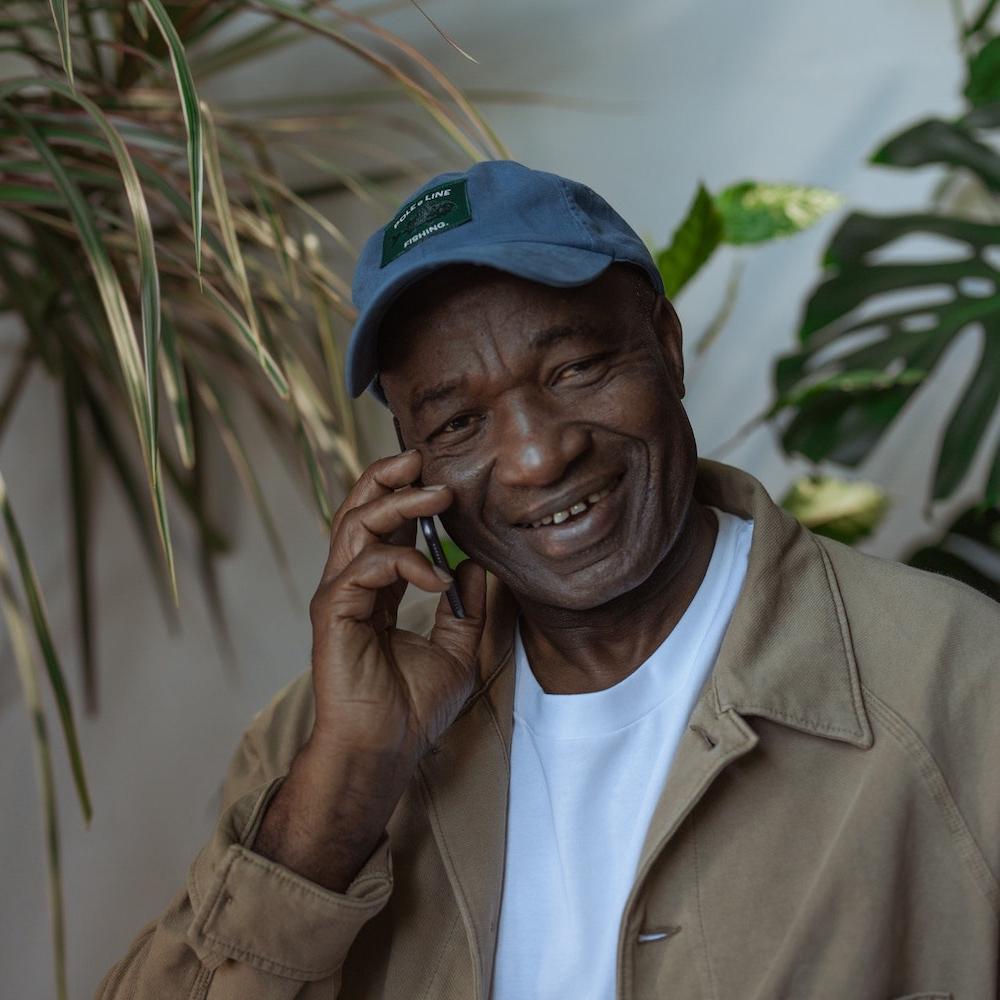
Wellness calls to local seniors is just one way the Chicago nonprofit M3 engaged virtual volunteers to keep on serving neighbors amidst the pandemic.
When My Block, My Hood, My City (M3) faced the challenges of lockdown early in the pandemic, the Chicago nonprofit had to pivot from its regular in-person activities. M3 is known for bringing together hundreds of volunteers to make tangible differences in marginalized communities. Social distancing is not exactly conducive to that work. Like many organizations, M3 remained responsive to community needs and began exploring virtual options. The programs that resulted not only kept the organization connected to its work, but also helped corporate volunteers continue to engage in meaningful service.
As M3 weighed options, Chief Operating Officer Cynthia Alfaro shared an idea with CEO and founder Jahmal Cole. “We can call people, because everybody’s stuck at home, and I know people want to do something,” she recalled to TriplePundit. The group started making wellness calls to seniors, noting any needs M3 could fulfill. The multinational consumer goods company Mars was one of the first corporations to reach out about supporting M3’s effort. What followed was a unique partnership that helped to keep people connected and communities served during a time of uncertainty and isolation.
Wellness calls become a simple but effective outreach tool for this Chicago nonprofit
Wellness calls were a standard way M3 kept in touch with senior neighbors during a time of high need. Before the pandemic, M3 focused on shoveling their sidewalks in the winter or ensuring they had water or a fan in the summer. Volunteers also took simple actions — beautifying parks, cleaning up neighborhoods and introducing young people to new experiences. Phone calls fit M3’s style of taking simple steps to reach a high goal. Alfaro said nobody wanted to fund M3 at first because they thought its approach was too simple. “People expect … that they are going to reform the whole system. People are looking for these complex solutions, and really sometimes it’s right in front of your face,” she said.
M3 already had a starting point for the wellness call program through its vast networks in the south and west sides of the city, Alfaro said. Even so, it put out a call on social media and in newsletters for more contacts and received thousands of phone numbers.
As volunteers checked in with seniors, they were alerted to food and wellness needs, as well as hurdles to accessing resources. After one recent wellness call, M3 was able to deliver urgent groceries within hours of hanging up. The woman on the other end of the call expressed tears of gratitude.
For corporate partners, volunteering pays off
During a year of increased awareness of social inequities, M3 was flooded with volunteers looking to lend a hand, though those volunteer numbers rise and fall, Alfaro noted. Corporate partnerships, on the other hand, provide a sense of stability. “It is good to have a solid partnership that is with us throughout the season,” she said.
Wellness calls weren’t a fit for every corporate partner, but many appreciated being able to continue their service work virtually. “On the corporate side, I think it was very fulfilling to be able to still connect with people and connect to people who feel isolated, who are in high-need populations,” she told us.
A steadfast relationship benefits nonprofit and company alike. Corporate volunteering has been found to improve employee engagement, job satisfaction, retention and more. To make an actual difference in company culture, though, the volunteering needs to be meaningful, Beth Bengtson, CEO and founder of Working for Women, which connects businesses to nonprofits working on women's empowerment, wrote for the Harvard Business Review. Speaking of fundraising and one-time events, she writes, “These ‘one-and-done’ experiences are not always in alignment with the company’s purpose and goals, and don’t deliver lasting impact for the companies, their employees, or the nonprofits.”
A solid corporate partnership brings stability and growth
Mars was one of the first companies to reach out about supporting M3 beyond writing a check, Alfaro said. “In this world, traditionally, it’s a one-sided conversation,” she told us, speaking to the tendency of companies to reach out with money, but avoid engaging with a nonprofit.
Beginning its relationship with M3 in 2020, the approach of the Mars Wrigley Foundation, with their global headquarters in Chicago, was to open a continuing conversation about the nonprofit’s needs. In addition to virtual volunteering through wellness calls, Mars Wrigley helped M3 set up holiday lights on Martin Luther King Drive in the South Side of Chicago last year. “Again, something really simple as putting up holiday lights … can really make a big impact,” Alfaro said.
“My goal is to build meaningful partnerships that leverage all of our assets. Through the Mars Wrigley Foundation we provide funding that enables community-based organizations like M3 to drive positive change and build stronger communities,” said Anne Vela-Wagner, executive director of the Mars Wrigley Foundation.
“Through the talent and caring of our incredible Associates we have conducted wellness calls for seniors, held virtual career exploration sessions with teens, and through our skills-based Mars Ambassador Program, we will have an Associate working full-time, over the course of a month, with M3’s team to strengthen their stakeholder engagement strategy,” she continued. "We’re also planning a ‘pack the van’ event in the fall to fill the first-ever M3 van with supplies in high-demand for those they serve,” A recent grant from the Foundation provided the funding for the van which allows M3 to increase its capacity and expand its impact. “True partnerships are multi-faceted and collaborative,” Wagner said. "I’m constantly exploring what’s needed and how we can maximize our impact.” .
Corporate expertise uplifts an industry
This year Mars was also able to give beyond the check with Nashville Humane Association (NHA), a 10-year partner.
Limiting human interaction proved to be a major challenge for animal shelters like NHA last year. “Our core programs rely on in-person interactions,” Laura Baker, executive director of NHA, told TriplePundit. “How do you adopt an animal when the human cannot safely meet it? How do you get animals into foster care without coming into contact with the foster? How do we protect the humans involved while also saving as many animal lives as possible?”
One of the tangible developments from Mars Petcare’s collaboration with NHA was assisting the nonprofit with Dogs on Zoom, a virtual pet adoption campaign from Mars brand Pedigree. “The animal welfare community is not known to be super tech heavy, but 2020 forced us to be! Mars [Petcare] helped provide and train us on how to function in a digital world,” Baker said.
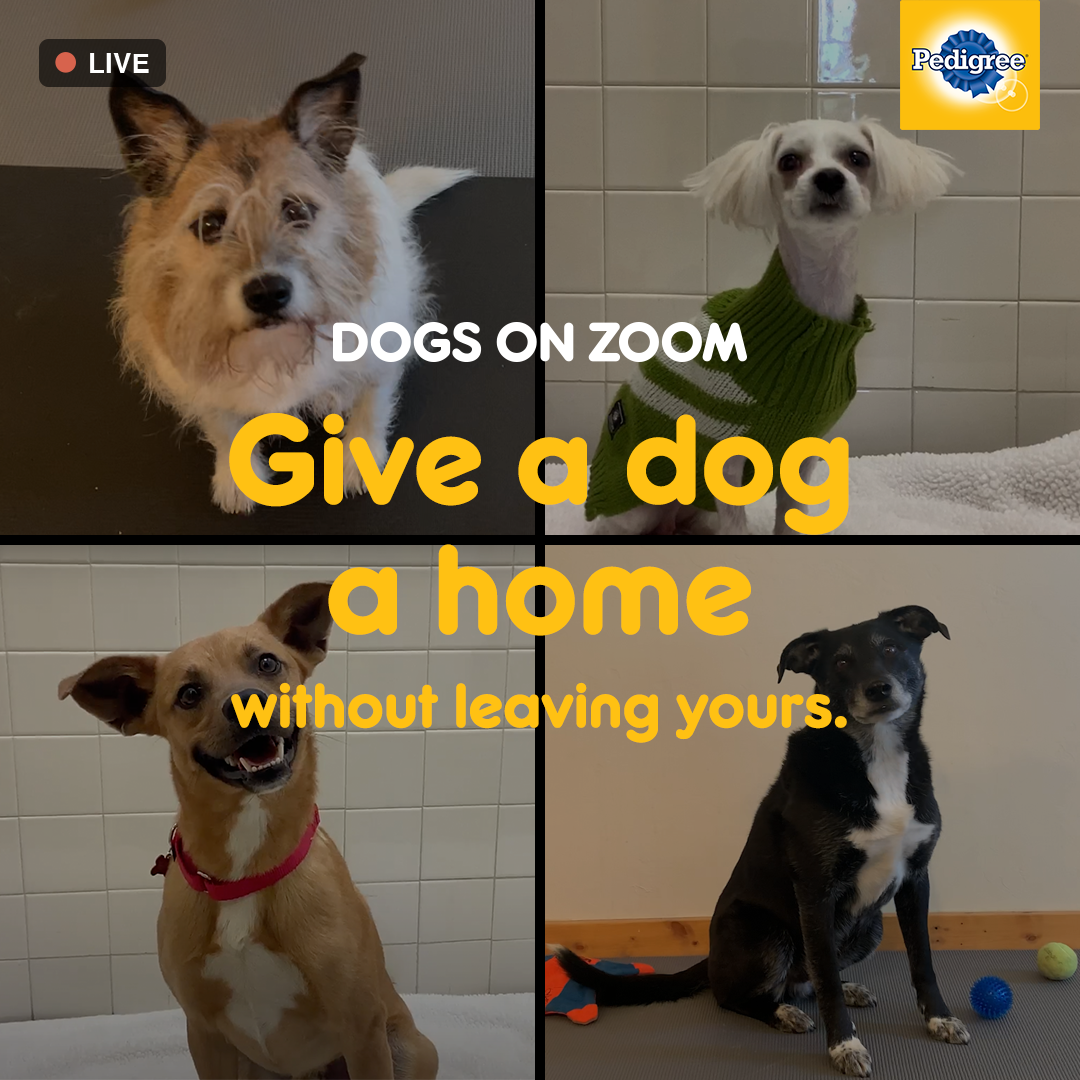
Dogs on Zoom helped NHA overcome the hurdle of introducing animals to the public, and Baker emphasized the importance of future pet parents finally meeting animals from the safety and comfort of their homes. NHA received 2,000 adoption inquiries, and all its featured dogs had multiple adoption applications by the end of the program.
Perhaps the best that virtual corporate volunteering did for nonprofits in 2020 was create a sense of consistency and help expand programs and reach. For their part, Chavarria says NHA found some permanent changes and growth last year. “2020 forced us to look at things differently, and I am happy to say that we are continuing some of those changes even in 2021,” she said. “That is definitely one huge silver lining to the pandemic.”
This article series is sponsored by Mars and produced by the TriplePundit editorial team.
Image credits: Pexels/Ron Lach, Pexels/Rondale Productions and Pedigree
On Monterey Bay, World’s Largest Energy Storage System Just Got Larger


California’s Monterey Bay is known for several things: a world class aquarium, breathtaking scenery dominated by cypress trees and cliffs and if chardonnay is your thing, the grapes here have a sterling reputation. Now, along the center of the bay’s coastline, the tiny community of Moss Landing (pictured above) is known for hosting what its builders say is the world’s largest energy storage system in the world.
And another phase of construction has made this facility even larger.
As announced last week, Vistra’s Moss Landing Energy Storage Facility switched on a 100-megawatt expansion, which brings the facility’s total capacity to 400 megawatts, or 1,600 megawatt-hours. Since it launched in July 2020, the battery system stores power and releases it when needed to California’s power grid.
The energy storage facility, a partnership between Vistra and the utility PG&E, uses technology developed by LG Energy Solution. This array of lithium-ion batteries is located on the site of a power plant in Moss Landing that has generated electricity for more than 70 years. Vistra also worked with the engineering firm Burns & McDonnell during this expansion. As of now, the current plan is for Vistra and PG&E to operate the plant jointly for another 10 years.
The Moss Landing expansion builds upon additional clean technology investments Vistra has recently made. Last year the company announced it would invest about $5 billion by 2030 in renewables and battery energy storage. That sum includes close to $1 billion of development projects underway that the company says will help the company shift more of its portfolio toward facilities generating renewable power.
California will need more projects like this if it is to meet its long-term climate action goals. The state seeks to have renewables generate half of its power supply by 2030. The Golden State also is determined to have emissions fall below 80 percent of 1990 levels by mid-century.
Image credit: Gabriel Barranco/Unsplash
Not an Oxymoron: Fossil Fuel-Free Steel Is Here


It doesn’t take much intuition to sort out that the manufacturing of steel is carbon-intensive. The reality is also that steel provides much of the backbone that makes our daily lives possible, from home to work and getting just about anywhere in between or far away.
The global steel industry recognizes that it has its part to play if the world will ever fully transition to a low-carbon economy; consultancies such as McKinsey has said the sector had better get moving if steel producers don’t want to see a good portion of their assets vulnerable to risks in the near future.
Considering the recent news coming from the IPCC and the general agreement that climate change is occurring faster than we had thought just a few years ago, time is of the essence. And with most estimates agreeing that global steel production accounts for about 7 percent of the world’s total emissions, the industry can certainly make a difference with new investments allowing for the use of next-generation fuels. That is, of course, if they can scale up.
One Swedish company says it’s already embarking on such a path.
Earlier this week, the Stockholm-based steel producer SSAB announced it had delivered its first batch of steel that is made completely without burning coal or coke. Instead, the company was able to produce this material for Volvo by using its own proprietary technology, which runs on energy that is 100 percent fossil fuel-free, i.e. “green hydrogen.”
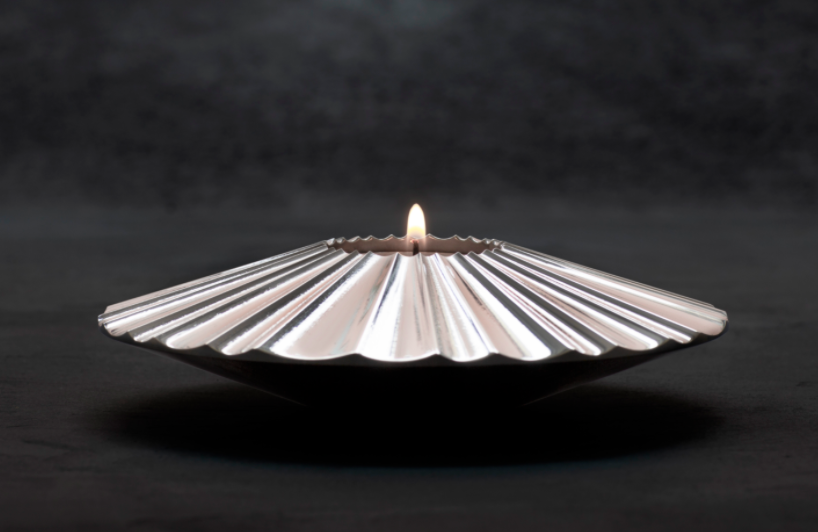
SSAB and Volvo first revealed this partnership back in April. Should the companies’ partnership continue as planned, the automaker will build some concept cars with the low-carbon steel this year. Smaller-scale production will launch in 2022, and assuming SSAB will be able to accelerate the production of its steel using green hydrogen, commercial-level manufacturing could start in 2026.
As TriplePundit has long reported, hydrogen is crucial to the global economy, as it is used for countless products, from food processing to manufacturing pharmaceuticals. Hydrogen is also easily transported by sea, rail or pipelines. The problem is that ample reserves of hydrogen do not exist in nature, so it must be extracted from another source, which usually is natural gas.
But if hydrogen can be extracted cost-effectively from water through a process called electrolysis, which applies an electrical current to unleash bubbles of hydrogen – and if that can be so with renewable energy sources such as solar and wind resources, therein lies a game-changer. That scenario would be especially true of the automotive sector – and a few such companies are already taking notice. Much of this talk has revolved around what would power next-generation cars, as in fuel cells versus all-electric drive trains versus the internal combustion engine.
Volvo’s investment, in contrast, is focused on the materials needed to manufacture the cars in itself; and if Sweden’s iconic automaker and SSAB can figure this out, then other companies beyond the automotive sector can solve the puzzle long challenging the global business community – how to clean up those massive, complicated and polluting supply chains.
Image credits: SSAB
Most of Us Aren’t Saving Lives. Company-Wide Time Off Would Allow Employees to Reset Theirs
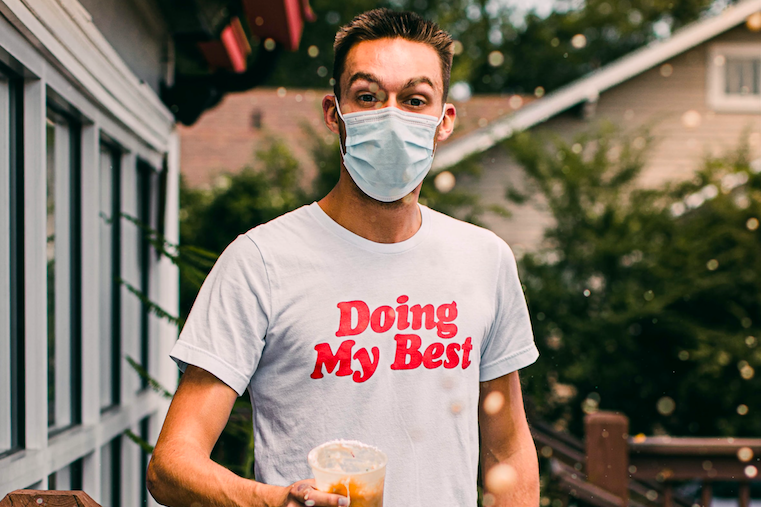

To say these are trying times for most people is a cruel understatement. We know the facts. Despite being marooned in the home office, few people have taken much time off. Many workers are now sorting out a return to the office, hybrid or full-time. Others are facing that reality while kids are, or may return, to school depending on how badly the Delta variant spreads. Then there’s the prospect of elderly family members, many of whom have been isolated for months and need help, or at least companionship, more than ever.
The situation many of us face at this time of sums up what most of us have felt the past 18 months. The one-again, off-again good and bad news surrounding COVID-19 and other festering social problems have left many of us feeling like Charlie Brown after Lucy pulled the football: only Charlie Brown ended up flat on his back with a bruised ego, not in a viral video or worse, in an ICU ward.
Fasten your seat belts, human resources people: Employee engagement, and of course the notion of what time off means, are being redefined, and being done so quickly.
There’s no question that many employees are feeling burnout in varying degrees. The advice is endless: stop having virtual happy hours, as no one likes going anyway; reduce the frequency of Zoom meetings; pay employees to take time off for vacation; don’t be a snitch and monitor whether or not your colleagues are on Slack; encourage people to capitalize on their mental health benefits, or just pay for it if healthcare plans offer miserly benefits; front the cost of virtual experiences (that aren’t Zoom happy hours).
But there is another idea, which some companies have tested out already. As one email from an organization that landed in TriplePundit’s inbox yesterday announced:
“…Over the past year, we made new investments in breakthrough organizations that ensure wellbeing in education, launched major initiatives to reskill workers for the future, and supported entrepreneurs and ecosystem actors working to repair and strengthen our democracy,” wrote the author of the organization’s email. “To continue moving this work forward powerfully, [we have] decided to take a moment to rest and reset. Our team will be stepping away from the inbox, turning off the webcam, and closing the laptop.”
That organization is completely shutting down from August 30 to September 8; everyone is taking time off. Everyone.
For many companies that are publicly owned, or have a rigorous sales cycle – among countless other factors – completely shutting down for a several days comes across as being a few pieces of fruit more than completely bananas. The idea of company wide time off, however, isn’t completely new: many big tech companies a generation ago used to shut down entirely around the Christmas and New Year’s holiday, but that was a cost-saving measure, and many employees were dinged vacation time.
Editor's note: Be sure to subscribe to our Brands Taking Stands newsletter, which comes out every Wednesday.
But some companies have realized the benefits of a complete break for everyone. LinkedIn did so this April. Bristol-Myers Squibb reported gave everyone worldwide two days off for rest. Other companies are going even further, by trusting their employees with unlimited leave.
As Erica Pandly of Axios wrote, “A growing number of firms are giving employees the same day or week off — separate from allotted personal vacation time — and finding that it's a lot easier for workers to unplug if their managers and peers are doing it at the same time.”
The reality is that most of us not working in emergency healthcare, or within a function where peoples’ lives literally depending on the hands or brains of others.
Executives horrified at the thought of such a plan, even for a day, may want to do it for other reasons. Those could include the burnishing of their companies’ reputations or something just about all communications professionals and executives crave: earned media.
Think of how a retailer could cement trust with employees by shutting down all stores, or several in rotation at a time for a day, allowing everyone to chill out or do those errands that have been piling up. Office employees might like the occasional weekday off to do those Costco runs or have a day at the beach or park without those weekend crowds. And again, more people would be able to take a complete, much-needed mental break knowing that they don’t have to feel as if they should check in with their peers or managers.
The stubborn fact is that the vast majority of us aren’t saving lives. Nevertheless, many of us, and others around us, feel as if their lives are at a tipping point. And from a numbers perspective, the costs of shutting down for a few days or a week could very well reduce the price of recruitment, and any perceived inefficiency resulting from employees who quite frankly, and justifiably, feel overwhelmed.
Image credit: Tabitha Turner/Unsplash
Five Ways You Can Support Those in Need in Afghanistan
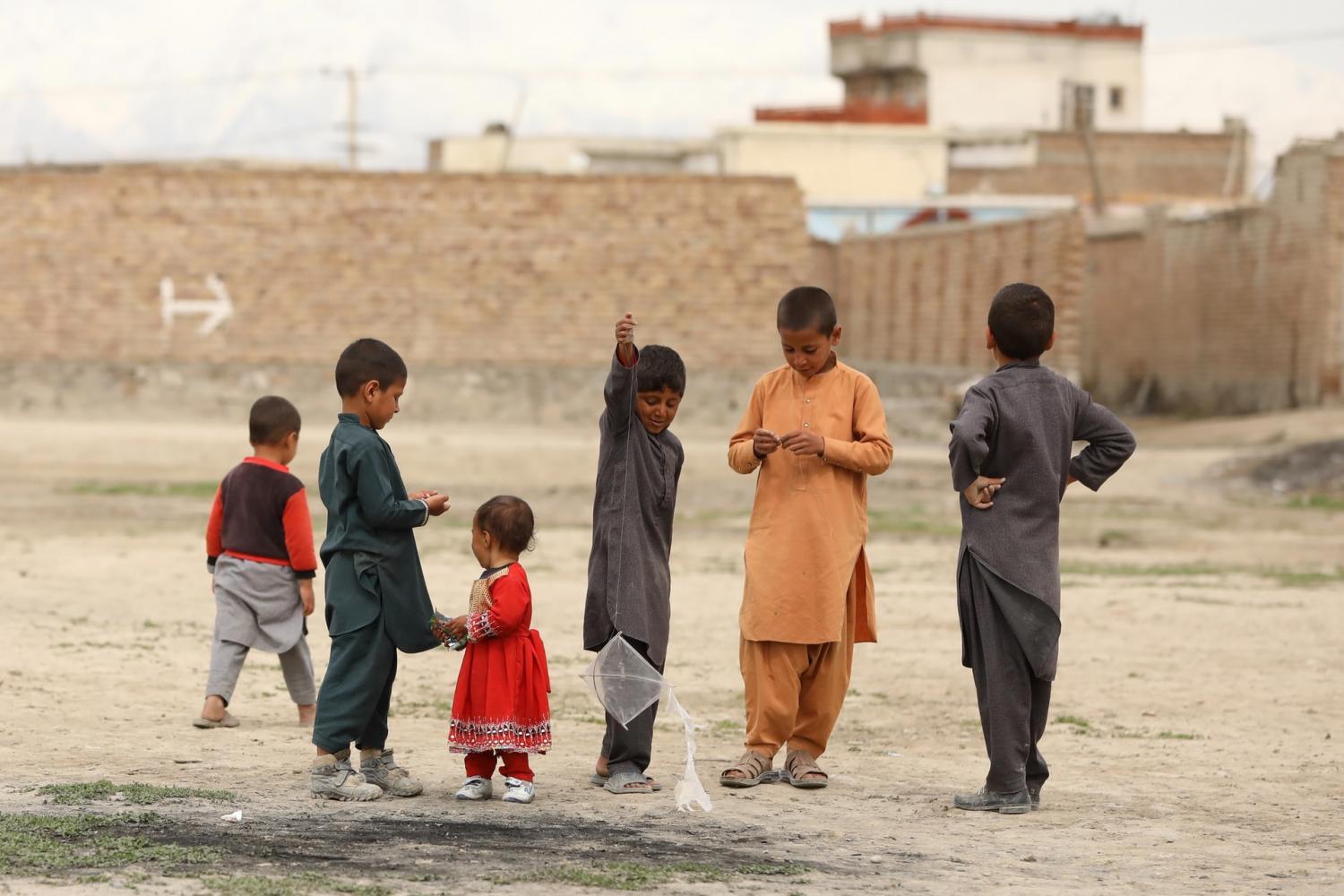

By Khanyi Mlaba
The scenes of thousands of Afghans desperately pleading for assistance and running for refuge as the Taliban solidified rule over Afghanistan for the first time since 2001 have been broadcast across the world and left it reeling.
As the news broke it wasn’t long before the country’s most famous human rights’ advocate, Malala Yousafzai took to social media to raise concern over the occupation of the Taliban, knowing all too well what the group’s rule could mean for women and girls.
“We watch in complete shock as Taliban takes control of Afghanistan,” she said on Twitter. “I am deeply worried about women, minorities and human rights advocates. Global, regional and local powers must call for an immediate ceasefire, provide urgent humanitarian aid and protect refugees and civilians,” she said.
The Taliban takeover came after international forces withdrew from Afghanistan, with the United States officially beginning to withdraw in May 2021. The militant group has since taken over the country city by city, eventually occupying the capital Kabul on Sunday. Afghanistan’s leadership, namely President Ashraf Ghan, had fled the country and millions of Afghans are seeking asylum.
The Taliban — who first assumed control of Afghanistan’s capital of Kabul in 1996, are now enforcing their interpretation of Islamic Law and implementing strict regulations that hindered the humanitarian rights of vulnerable communities — have claimed that they are interested in an inclusive government, a peaceful takeover and writing laws that will take into consideration women’s rights.
However there have already been reports of restrictive conditions on women, and women being forced to stop working by the militant group, begging the question of whether the Taliban will do as they said and uphold certain rights for women, or whether women’s rights are in severe danger.
Women and girls are the most vulnerable now that the Taliban have taken hold of Afghanistan. Before they lost their rule over the country in 2001, the Taliban had implemented strict laws on women’s rights. Women had to cover their faces and bodies, they were not allowed to work, girls could not go to school, and if a woman needed to leave her house, she should’ve been accompanied by a male relative.
For two decades Afghanistan worked towards gains for women’s rights, including access to education and the ability to work. However there is growing fear that these gains will be entirely reversed with the recent rule of the Taliban.
Speaking to NPR, Rangina Hamidi, Afghanistan's acting education raised concerns for the future of the rights of girls and women in the country.
"There is a lot of fear among girls and women," she told NPR. "I have had many messages from my female family, friends calling me, asking me what I know and what they should expect. And I wish I had an answer for them.
Read the full blog on the Global Citizen website
Previously published in the 3BL Media newsroom.
Hydrogen As a New Source of Energy for E-mobility


By Nancy Schurig
Getting from A to B without endlessly choking the planet on a deadly cocktail of toxic pollution is more feasible these days as electric mobility continues to gather pace.
E-mobility, the environmentally friendly method of travel which steers away from existing fossil fuels, uses energy from electrical power sources through charging instead of emitting carbon into the atmosphere.
An abundance of greener options are on offer when looking to make the switch to a more sustainable vehicle choice and advances in alternative fuels – such as hydrogen – have given e-mobility a boost.
But how long will it be before more people choose to step on the (colourless) gas?
The use of hydrogen to power vehicles reduces greenhouse gas (GHG) emissions which contributes towards meeting the targets set by the Paris Climate Agreement. Although these vehicles were first introduced in 2014, momentum is building more for them now as car owners become more serious about lowering their carbon footprint in the battle against climate change. It helps that green hydrogen (i.e. hydrogen obtained from renewable energy sources such as solar or wind) is touted as playing a vital role in the decarbonisation of the energy system.
A hydrogen fuel cell electric vehicle (FCEV) is powered by pressurised hydrogen from a fuelling station.
Vehicles powered by hydrogen can be filled as quickly as their fossil fuel equivalent, but the benefit outweighs its polluting counterpart in that it produces only water and heat as a by-product. This means there is no tailpipe pollution in transit, resulting in zero carbon emissions.
Hydrogen powers vehicles through a conversion process from chemical energy to mechanical energy. This is achieved when oxygen reacts with hydrogen through a fuel cell, which then runs an electric motor.
Although energy is lost along the way, via the conversion process, hydrogen can decarbonise heavy transport (such as road freight) which would utilise a lot of fossil fuels otherwise, and we are fully aware of the damage caused by dirty fuel. It can also decarbonise the chemical, iron and steel industries as well as improve air quality.
While hydrogen fuel can be produced in a more eco-friendly method through the electrolysis of water, fossil fuels are still currently used in the production chain of hydrogen power. Therefore, the energy used for hydrogen fuel production must be produced using green technologies to ensure the cars are deemed a better option for the environment.
A car that emits no pollution into the atmosphere? It is certainly a conversation starter and sounds far more futuristic than it actually is. But the potential of the element shouldn’t be underestimated – hydrogen is extremely versatile and does more than power a car and reduce noxious emissions from entering the atmosphere.
Not only is hydrogen a success on the ground but in liquid form it is used as rocket fuel to propel a space shuttle’s main engine to heady heights.
NASA has used hydrogen gas to enter space for decades. As much as 500,000 gallons of cold liquid hydrogen is burnt for each shuttle flight in the rocket engines, with an additional 239,000 gallons used up by transfer operations and storage boil off.
Future plans include generating and recycling hydrogen in space (by recombining it with exhaled carbon dioxide for water renewal), which will reduce the requirement for supplies delivered from Earth.
Speaking of which, back down on Earth, hydrogen can be transformed into fuels for planes and ships, (here it can be transported in its liquid form) as well as for cars and trucks. It can be transported as a gas by pipelines and as electricity to power homes.
The opportunity is there for hydrogen-based fuels as shipping and aviation have limited options for low-carbon fuel.
Hydrogen can produce and store energy in a multitude of ways and is one of the prime options for storing energy from renewables, as well as delivering it.
On top of this, further investments in hydrogen will create new skilled jobs in the future and boost global economies.
Dan Lipinski, political scientist and American politician, said: “Hydrogen holds great promise to meet many of our future energy needs and it addresses national security and our environmental concerns.
“Hydrogen is the simplest, most abundant element in the universe.”
What usage of hydrogen has impressed you the most? I would love to hear from you on the subject, especially if you drive a hydrogen-powered vehicle. Please contact me at nancy.schurig@acre.com.
Nancy Schurig is a Senior Consultant within Acre’s Corporate Responsibility and Sustainability team in Europe. She specialises in sales, operations and business development recruitment within the sustainable energy sector, including renewable energy and energy storage systems for the German market.
Previously published on Acre.com and in the 3BL Media newsroom.
Image credit: Ralph Hutter/Unsplash
TIC: Meet the Team Bringing Cellular and Internet Service to Indigenous Communities in Rural Mexico


Now that the Cisco Global Problem Solver Challenge 2021 winners have been officially announced, we are excited for you to learn more about each winning team and the story behind each innovation. The Cisco Global Problem Solver Challenge is an annual competition that awards cash prizes to early-stage tech entrepreneurs solving the world’s toughest problems. Now in its fifth year, the competition awarded its largest prize pool ever, $1 million USD, to 20 winning teams from around the world.
Of the 20 teams, Telecomunicaciones Indígenas Comunitarias, A.C. (TIC) was honored as the regional first runner-up for the Americas with a $75,000 USD prize. TIC is a civil organization that supports indigenous communities across rural areas of Mexico to build, manage, and operate their own telecommunication networks. In Mexico, it’s estimated that 12M people lack access to broadband which is a major barrier when it comes to social connection and equality. Since 2015, TIC has developed an innovative approach that combines open-source technology, community participation and ownership and regulatory advocacy, which has brought thousands of people cellular service in previously uncovered locations.
To learn more about TIC’s mission and the impact and reach it hopes to expand with the monetary prize, I met with Penélope Partida, Operational Coordinator at TIC.
What problem is your technology solution trying to solve?
Penélope: What we’re aiming to do is to diminish the lack of access to communication. We’re an organization that is comprised of communities and an operational team that decided to take action to address the lack of infrastructure in rural, indigenous communities in Mexico. We’re based in Oaxaca state, which has the largest indigenous population in Mexico. Minorities always have less opportunities with most everything. The reality is that not even commercial operators or the government are able to supply communication rights to the indigenous communities. So, this is an effort we’re taking on, but we aren’t approaching it alone; we have support from other open-source organizations across the globe. Together, we developed a 2G mobile communication system, but our next venture is to expand the technology to 4G to not only allow the communities access to communication but also to information through the internet.
Can you explain how the solution works?
Penélope: If you think about the mobile operator that you’re using with your phone, we are essentially serving as a mobile operator, but in a smaller context. We are replicating the same architecture as 2G technology in smaller networks that are autonomous. Many of the features for commercial operators run on hardware, but we’re reproducing these features through software so that the system is less expensive and more feasible for the communities to acquire, operate and maintain.
One of the main goals that we’ve achieved so far is the recognition of the Mexican government that the autonomous networks being built by the communities are legally installed and permitted to be used. While commercial operators must pay for the license, the indigenous communities are free from the use taxes, so it makes it possible for the communities to legally operate and use commercial mobile phones on their own community network.
What inspired you to develop this solution?
Penélope: The first thought from the TIC founders was to enable user feedback where indigenous community radios were operating. So, the movement started with radio broadcasting and the goal to receive feedback from users who were listening to the stations. Given not all the communities have a radio station, the opportunity became more about the need to communicate, especially with family. There’s a lot of migration from Southern Mexico to the United States, so the need to communicate with relatives outside of their communities was increasingly important.
Those is Southern Mexico have a history of being fighters for their rights. They take pride and care in protecting their territory, and they have a sense of the common good for the community. That means, nobody can own the water, parks or roads. In that sense, the air is also part of the common good, and they started to think that if their community will not be offered telecommunication services that they can become their own operator of the service. TIC has partnered to establish networks and train operators across 21 indigenous communities, and there’s a long pipeline of more requests. Expansion requires 4G technology and that’s what’s currently in development.
How will winning a prize in the Cisco Global Problem Solver Challenge help you advance your business?
Penélope: We’re on a quest to develop 4G technology! This takes investments in equipment and software feature developer resources. We’ve purchased used equipment from larger operators who are moving to 5G, but we’re finding that not all the equipment is reusable, so this is protracting our development timeframe. So, the prize will go a long way to helping us achieve our goal of developing 4G this year and piloting it with a community.
Our intent is to be self-sustainable, and we’ll achieve this when we’re able to expand the user-base, which is currently at 5,000. Donors are helping to bridge the gap and accelerate our ability to reach well beyond the 70 towns we’re serving.
How has the global pandemic impacted your work?
Penélope: Since last year, our activities have considerably slowed down. We often travel to the communities to train and support those who administer the network, but most of the communities closed their doors limiting the access. We’ve only been permitted when a severe network outage occurs.
The pandemic has also caused the slowing of the development of 4G, which has only proven to be more critical given the need for children to connect to the internet to attend school virtually during the pandemic.
Why did you decide to start your own social enterprise versus going to work for a company?
Penélope: I’m aware of the world we live in terms of injustice and inequality, so it made more sense to work in a place where I can do something to fight against the system that’s separating the rich from the poor. Working for a commercial company doesn’t allow me to make a real difference. I was personally moved to collaborate with TIC, and this is where I know I can make meaningful impact.
It’s wonderful to see the indigenous communities be proud of themselves for having the network operations in their hands. They are advancing in their technical learning and seeking solutions for their community. In the end, they’re able to maintain their autonomy. It’s their territory, their system, their network to operate, and we are just the support arm for them. What makes me happiest is seeing the communities be proud of themselves for what they’ve accomplished.
What advice do you have for other social entrepreneurs?
Penélope: Be congruent with what you believe in and what your actions are. If you see things happening in the world that you don’t agree with, don’t stay still. Take action.
Stay tuned for more articles in our blog series, featuring interviews with every Cisco Global Problem Solver Challenge 2021 winning team!
Previously published by Cisco and in the 3BL Media newsroom.
Image credit: Cisco and TIC
New Lawsuit Shows Sign of a Crack in the Gun Rights Armor


Ninety years ago, the murderous gangster Al Capone finally met justice for the mundane crime of failing to file federal tax returns. Now a similar dynamic is at work in the effort to impose common sense restraints on guns in the U.S.
Gun manufacturers are suddenly facing a series of potentially crippling lawsuits that leverage standard consumer protection principles. If the effort succeeds, the courts could finally force gunmakers to account for the lethal consequences of their marketing strategies.
Sandy Hook as the tipping point
Gun safety advocates hoped that the 2012 massacre at Sandy Hook Elementary School in Connecticut would be a political tipping point. It was not, but it could very well be the legal tipping point.
In 2014 a group of Sandy Hook parents filed a lawsuit alleging illegal marketing practices by Remington, which made the shooter’s Bushmaster rifle. Five years later, in 2019 the Connecticut Supreme Court finally ruled that the case could move forward under the provisions of the 2005 Protection of Lawful Commerce in Arms Act (PLCAA).
The PLCAA has long been upheld as a major obstruction to gun safety legislation. It carves out special protections for gunmakers that are not available to other manufacturers. As a result, the makers of some of the most dangerous consumer products in the world have been considered immune from consumer lawsuits.
However, the PLCAA does not offer perfect immunity. Legal experts have noted that the law does provide for gunmakers to be sued for negligence, or for knowingly violating state or federal law. The judge in the 2019 Sandy Hook decision affirmed that analysis.
Calling gunmakers to account for marketing guns
In light of the Sandy Hook decision, the Congressional Research Service undertook its own analysis of the PLCAA in 2019. The office agreed with the view that marketing practices do not come under the law’s blanket protections.
The Research Service did caution that the Connecticut Supreme Court ruling was far from the last word on the topic. Congress could amend the law to strengthen protections for gunmakers, or the U.S. Supreme Court could decide against the Sandy Hook plaintiffs if the case went that far.
In the meantime, though, momentum has gathered for a focus on the marketing practices of gunmakers.
Earlier this summer, for example, a judge ruled that victims of the 2019 synagogue shooting in Pittsburgh can move forward with a lawsuit against both the gunmaker and the gun shop that sold the weapon.
The judge accepted allegations that “Smith & Wesson, the nation's largest gunmaker, knew its AR-15-style rifle could be easily modified into a machine-gun-like or an assault weapon in violation of state law,” and that the company “negligently marketed the rifle to youths on social media and video game-style ads.”
Editor's note: Be sure to subscribe to our Brands Taking Stands newsletter, which comes out every Wednesday.
A similar argument has come up for a new case brought by Mexico against a group of U.S. gun manufacturers, including Smith & Wesson.
Mexico has strict gun laws that make it virtually impossible for private citizens to purchase guns. Nevertheless, the nation is awash in gun violence, thanks in large part to an estimated 200,000 guns that illegally enter from the U.S. every year.
According to a report on National Public Radio, the Mexican government is suing the group of manufacturers in federal court for $10 billion in damages. They allege that the companies intentionally designed and marketed guns favored by drug cartels.
NPR cites Colt’s gold-plated “Emiliano Zapata 1911” gun as a particularly egregious example, noting that “the gun is coveted by cartel bosses, according to local media reports.”
Other examples of cartel-preferred weapons are Century Arms’ guns styled after the AK-47, and a sniper rifle manufactured by Barrett.
The marketing of guns and risk management
Some legal experts do not expect the Mexican lawsuit to succeed in court. However, the case does provide the Mexican government with an argument to counterbalance accusations that it is not doing enough to stop illegal drugs from entering the U.S.
Other experts anticipate that the case may stand a chance of reaching the discovery stage. That alone would be a significant victory for gun safety advocates, because it could establish a paper trail for marketing practices that target underage youths, at-risk males, criminals, and other persons who should not have unlimited access to firearms.
One interesting development in that regard occurred last month, when Remington offered a $33 million settlement to the Sandy Hook families. The offer occurred after a judge denied Remington’s request to have the Sandy Hook lawsuit dismissed.
The Sandy Hook families are considering the offer as of this writing. Meanwhile their attorney, Josh Koskoff, has emphasized that final amount of the settlement is not as important as landing a financial blow on the gunmaker.
“Since this case was filed in 2014, the families’ focus has been on preventing the next Sandy Hook. An important part of that goal has been showing banks and insurers that companies that sell assault weapons to civilians are fraught with financial risk,” Koskoff has stated.
Regardless of any further action by Congress or the U.S. Supreme Court, the focus on manipulative marketing raises a risk factor that could force the U.S. entertainment industry to reassess its relationships with gun manufacturers.
Another element that could come into play is the failed insurrection of January 6. The violent mob that stormed the Capitol Building on January 6 could have turned the halls of American democracy into a slaughterhouse, were it not for strict local gun control laws that reportedly dissuaded almost all of the participants from bringing firearms to the scene.
The federal investigations and legal consequences of January 6 could reveal connections between the marketing of guns and the role of white supremacist organizations in the political violence that played out in the years and months leading up to the insurrection, even as far back as the armed takeover of the Malheur national wildlife refuge in 2016, and earlier.
Many leading corporations have already cut their exposure to risk by cutting ties with the National Rifle Association (NRA), dropping their membership in the lobbying organization ALEC, or withdrawing political donations to elected officials who supported the January 6 insurrection. Those that remain may also head for the exits as the marketing practices of gunmakers continue to come under the legal magnifying glass.
Image credit: Ben Mater/Unsplash
Integrating Racial Equity into Our Sustainability Work


Sustainability professionals continue to be expected to respond to a growing list of topics, while simultaneously recognizing the intersectionality among them. As leaders who are helping our organizations navigate the complex ESG landscape, we can’t afford to ignore or minimize pressing issues. Racial equity and justice is one such area that demands our attention, yet it comes with some underlying barriers that we need to address.
Our teams can better reflect our global society
First and foremost, we should make it a priority to diversify our own sustainability organizations. While some of our work consists of implementing diversity initiatives across entire organizations, it’s essential that the work starts with us, and our own teams reflect the outcomes we would like to see at scale. Bringing a larger number of people with different backgrounds and experiences to help shape our sustainability strategy and stakeholder engagement is critical to the work we do now more than ever. Let’s look beyond the typical sustainability and CSR applicants to those in other sectors and industries (e.g nonprofits, including community organizing, and government).
Our new virtual work environment offers us the ability to attract talent from areas we perhaps previously hadn’t been able to consider -both across the U.S. and internationally. And, the diversity, equity and inclusion (DEI) field is representative of many diverse BIPOC (Black, Indigenous and people of color) backgrounds. Talent in this space could be easily plugged in to participate on teams as well as lead sustainability and CSR organizations, as many of the same skillsets such as change management, communication, strategy and coalition building are transferable.
Racial equity can be integrated into sustainability education
We also need to introduce more education on racial equity into our business schools, continuing education workshops and seminars, and conferences. Racial equity and broader DEI should be a cornerstone of our sustainability education and an integral pillar of our ongoing work. The need for this racial equity educational focus is not so much around why racial equity is important. We must educate our future leaders to have a clear understanding of what it is we are really talking about, and how we as sustainability leaders can build this into our work and implement efforts that advance a more racially equitable organization and society.
One such example of racial equity education is happening at Presido Graduate School (PGS), a graduate school dedicated to educating individuals who are working for a more just and sustainable world, where I serve as adjunct faculty. Over the past year, we reached out to our community to engage in dialogue on racial equity, including holding monthly student meetings. We hosted events on how philanthropy and ESG are being used to dismantle systemic/structural and institutional racism, and launched a Racial Equity in Action blog series.
PGS has now introduced an online course called “Integrating Racial Equity into Our Sustainability Work,” which is meant to provide a foundation for sustainability and social impact leaders. All incoming MBA and MPA students will be required to take this course and it will be made available to the broader faculty, staff and larger student body as well. The elements of the course include an overview of familiar sustainability frameworks that are already integrating responsibilities on diversity and racial equity such as the SDG’s, the UN Declaration on Human Rights, SASB and the UN Global Compact to name a few. It explores the rising investor focus on ESG and its corresponding implications for diversity and racial equity. The course also provides a brief overview of the history and current state of racial equity in the U.S. as well as considers the business case for diversity, its societal value, and how we can move beyond performance measures to insist on lasting systems-level change. Finally, and perhaps of most importance, the course introduces students to existing frameworks for integrating racial equity in the workplace, which can be leveraged by sustainability leaders to build and advance racial equity programs inside of organizations.
The value that sustainability leaders can bring to advancing racial equity and dismantling racial injustice could prove transformative. Racial equity, and more broadly DEI, are not stand-alone issues. Rather, they are intertwined with all of the work we do in creating value for our organizations, society and the world.
Image credit: Unsplash